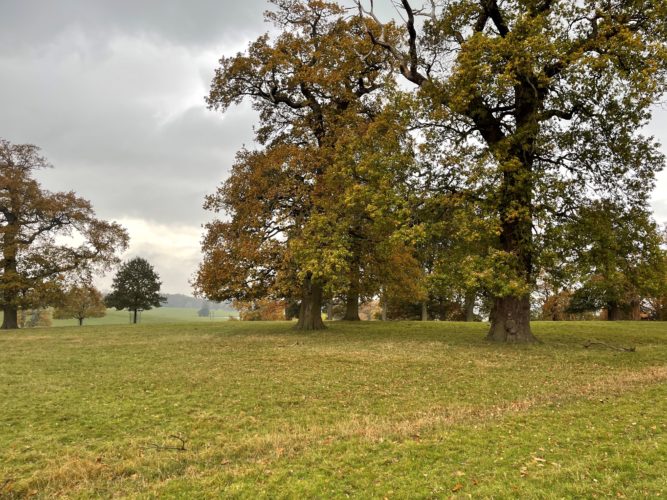
Greensand Country’s Historic Parkland
Historic Parklands in Greensand Country
Did you know there are 31 historic parklands in Greensand Country? Historic parklands are landscapes where house and grounds are considered as one. The main house may no longer be standing or be substantially different, but the whole area is a cohesive design.
Changing styles
The historic parkland we see today in Greensand Country is a culmination of a millennia of evolving tastes. Medieval deer parks and ecclesiastical sites are some of the earliest sites we now recognise as historic parklands, such as Woburn Abbey. By the 17th century, formal landscape parks were in fashion, with tree avenues, lakes, and pavilions. Elements of this design style can still be found at places like Wrest Park. This formal design gave way to the more naturalistic landscape style, typified by landscapes designed by ‘Capability’ Brown (Ampthill, Southill, and Haynes Parks) and Humphry Repton (Moggerhanger Park, Battlesden, and Hazells Hall). Later parkland, including Victorian designs with extensive arboreta (Flitwick Manor Park and Stockgrove) showcase the real diversity of landscapes present in Greensand Country.
Often dotted along the Greensand Ridge, historic parkland strongly contributes to our feeling of what makes Greensand Country unique and special. Whether you’re walking, cycling, or even driving through the area, you can spot some key features of historic parkland landscapes…



Mature Parkland Trees Designed Water Features Ha-Ha



Estate Railings Tree Avenues Sandstone Structures (e.g. ice houses)
Places for Nature

The diverse landscape within our historic parklands is home to a variety of habitats, all supporting the area’s biodiversity.
Grassland, or pasture, is a key habitat that supports a wide selection of flora and fauna. The acid grassland and marshy grassland found at Ampthill Park for example are great examples of these habitats. These are best managed by grazing, which control grass and allows wildflowers to survive. Estate railings and ha-has are used to control where livestock are grazing without blocking views.
Historic parkland often contain woodland, often seen as woodland belts or tree avenues. These can include sections of ancient woodland, and include both native and ornamental (non-native trees). They are home to scarce species, such as the purple emperor butterfly and native bluebells. Deer are a major threat to woodland, you can read more about deer management in Greensand Country here.
Water sources throughout historic designed landscapes are also an important, such as the birdlife and aquatic species found around the Stockgrove Lake.

Protecting and Enhancing Historic Parkland
Historic parklands are fragile landscapes, susceptible to pressure from divides ownership, development, changing land use, and climate change. Two parklands within Greensand Country have been identified by Historic England as ‘at risk’.
The Greensand Country Landscape Partnership have been working with historic parkland owners, with everything from tree planting and adding estate railings to supporting management plans that ensure sites are well managed to preserve their heritage and enhance their biodiversity.
Bedfordshire Gardens Trust are a volunteer run organisation devoted to the promotion, research, and conservation of all types of designed landscapes across the county. With strong pressure of developmental pressure in Bedfordshire for our historic parklands, their conservation work is vital. They work alongside the national organisation and statutory consultee for Registered Parks and Gardens, The Gardens Trust.
Exploring the historic parklands of Greensand Country

Many of the historic parklands are open to the public, or can be visited as part of the National Garden Scheme. Why not take a walk through Stockgrove (Rushmere Country Park), Ampthill Park, Moggerhanger Park, and Old Warden Park (Shuttleworth Collection and the Swiss Garden).
With the help of volunteers, we have also created two Historic Parkland Walks, so that you can experience some of the areas less well known parkland: Apsley Guise and Husborne Crawley in the West and Woodbury and Tetworth in the East.
You can also discover more about the history of Flitwick Manor Park with a FREE talk run by Beds GT and Stephen Coleman. More information available here.
If you would like to get involved in a project to research and record our historic parkland, please contact daniel@greensandcountry.com.

































 Back to Blog
Back to Blog